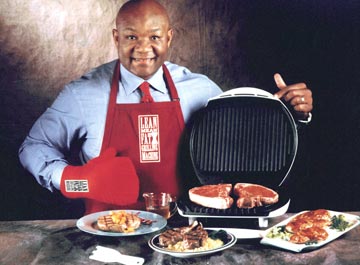 Many colleagues I speak with have a sense of or some experience with the tenets of “Lean.” But how does it really apply to healthcare – and is it really a way for medical practices to do more with less and maximize their resources? I recently spoke with Lean Healthcare Expert Mark Graban about where the rubber meets the road in healthcare.
Many colleagues I speak with have a sense of or some experience with the tenets of “Lean.” But how does it really apply to healthcare – and is it really a way for medical practices to do more with less and maximize their resources? I recently spoke with Lean Healthcare Expert Mark Graban about where the rubber meets the road in healthcare.
Mary Pat: Most people have heard of Lean or have had some experience with it – can you explain what Lean is?
Mark: “Lean” is a process improvement methodology and a management system that’s based on the Toyota Production System, with roots and influences in the teaching of Dr. W. Edwards Deming. What was originally “Lean Production” has been embraced beyond the automotive industry into other types of manufacturing, the service sector (including healthcare and settings like Starbucks), and even government (such as the state of Washington)
Mary Pat: What is the difference between Lean, Six Sigma and Continuous Quality Improvement (CQI)?
Mark: I would associate CQI most closely with the term Total Quality Management (TQM) – a term used more in the 1990s. Arguably, Six Sigma is an evolution of TQM, with a deeper statistical focus and the added formality of “belts.”
Lean typically uses the “7 basic QI tools” that are in common with TQM and Six Sigma. While I think Lean and Six Sigma can co-exist and be complementary, I do not believe in a combined so-called “Lean Sigma” approach. Six Sigma is expert driven, while Lean is more inclusive of the problem solving capabilities of all staff members. I also think Lean provides a more cohesive management philosophy than does Six Sigma, while Six Sigma certainly has valid methods that can be used for particularly sticky problems. One false dichotomy that’s often stated (usually from the Lean Sigma crowd) is “Lean is for speed/efficiency/flow and Six Sigma is for quality.” This is completely false. The two core pillars of the Toyota Production System are “Just in Time” (flow) AND “Jidoka” (or quality at the source).
Mary Pat: Tell us about your background and how you got involved in Lean healthcare.
Mark: My undergraduate degree is in Industrial Engineering and I have two master’s degrees, in Mechanical Engineering and an MBA, from MIT. Growing up in a GM family outside of Detroit, I saw a career for myself in progressively higher manufacturing management roles. After 10 years in industry, in 2005, I had an opportunity to take a role at Johnson & Johnson, as part of their consulting group that did Lean improvement work with medical laboratories and health systems. I was fortunate to work with some of the early adopters of Lean healthcare (those working with innovative labs in the early 2000s) and to help them extend their methodology into other parts of hospitals and primary care. When I got into healthcare, I figured it would be an interesting detour or a career shift… turned out to be a career shift as I love working in healthcare.
Mary Pat: What has been your most unusual or interesting lean project in healthcare?
Mark: Well, they are all interesting, but I think one of my favorite experiences was working with a National Health Service (NHS) hospital pathology department (lab) north of London back in 2008. Working there for about eight weeks, it really solidified my view that there’s much to learn about healthcare delivery across national boundaries. Although the payer model is different, the way labs (and, more broadly, hospitals) work is pretty much the same in the U.S., Canada, Japan, Holland, Sweden, and other countries I’ve visited or worked with. There’s much to be learned from American hospitals (as Japanese hospitals come here to visit and learn) and there’s much to be learned from the NHS, such as their “Releasing Time to Care” (RTTC) model for improving inpatient care. The RTTC website states “Releasing Time to Care focuses on improving ward processes and environments to help nurses and therapists spend more time on patient care thereby improving safety and efficiency.”
Mary Pat: On your blog, you talk about Lean in terms of eliminating waste and creating value. Value is something we are starting to hear a lot about in healthcare – can you talk about how you use Lean to create value?
Mark: In healthcare, I think value to the patient is any activity that contributes to being comforted, diagnosed, treated, or educated. When we reduce waste, the time previously spent by doctors, nurses, or others can be rededicated to patient care – or value. If nurses get to spend more time with patients, then we have more value (better education and better emotional care) and we also reduce defects – like falls, pressure ulcers, etc. When we reduce waste and that, for example, reduces the length of stay, then we can increase throughput and see MORE patients, providing more value (and with less delay). Lean also has guiding principles that drive us to avoid providing too much care – unnecessary lab tests, etc., — since more activity doesn’t necessary mean more value.
Mary Pat: I know most of your work is focused on healthcare in hospitals, what about healthcare in physicians practices – is there any opportunity to apply Lean concepts?
Mark: With Lean, we should always start by defining the problem – what do we want to improve? What are some of the problems in physician practices? If patients are waiting a long time for appointments, the clinic should work on increasing patient throughput – which is done by reducing waste, not shortening appointment times. Clinics can make other improvements that increase patient satisfaction, such as improving communication with patients, reducing delays in getting lab results or prescription refill orders out, etc. There are fewer examples of Lean in outpatient clinic settings, compared to hospitals, but the results can be impressive. Sami Bahri, DDS, “the world’s first Lean dentist” in Jacksonville, Florida has reduced waiting times for patients (eliminating the use of his waiting room and taking care of follow up care in the same visit instead of a separate visit), while dramatically improving his dental group’s financial performance (as outlined in his book Follow the Learner).
Mary Pat: Short of attending a Lean workshop, which many healthcare managers may not be able to do, how do you suggest they introduce themselves to lean and consider how they can apply it to their organization?
Mark: At the risk of being self-serving, my books Lean Hospitals and Healthcare Kaizen are a relatively inexpensive start. There are also some fantastic books that have been published about the Lean work done at three leading organizations: On the Mend (about ThedaCare), Transforming Health Care: Virginia Mason Medical Center’s Pursuit of the Perfect Patient Experience, and Leading the Lean Healthcare Journey: Driving Culture Change to Increase Value (Seattle Children’s Hospital). Books and blogs are inexpensive (or free) ways to learn Lean lessons and case studies.
Mary Pat: You have a lot of interesting resources on your blog, www.leanblog.org, among them 168 podcasts! What one podcast that you’ve recorded should everyone reading this interview listen to and why?
Mark: I’ve managed to have some really great guests on the podcast to talk about Lean, including former ThedaCare CEO John Toussaint MD. I think the most powerful podcast is my discussion with Paul O’Neill about leadership and patient safety (http://www.leanblog.org/124). O’Neill made huge improvements to employee safety while CEO of the aluminum maker Alcoa and brought his leadership lessons into healthcare through the Pittsburgh Regional Health Initiative, inspiring the work of Richard Shannon, MD and others who have reduced hospital acquired infection rates through Lean methods.
Mary Pat: You are also Chief Improvement Officer for KaiNexus. What is KaiNexus and what does a Chief Improvement Officer do?
Mark: KaiNexus is a software and technology company that makes improvement easier for organizations, including those in healthcare. We were founded by an Emergency Room doc who learned about and used the “kaizen” method of improvement as a resident at Vanderbilt, developing technology that was later spun out as KaiNexus. We have a web-based platform that allows organizations to solicit, capture, and track improvement ideas, resulting in employee recognition and a searchable and sharable history of improvements that can be easily accessed. The software leads to more improvements being implemented more quickly, based on our customers’ experience. In the role of chief improvement officer, I am the primary educator and advocate for Kaizen-style improvement, working with current customers and assisting in the sales and marketing processes. We’re a small company, so everybody gets to do a little bit of everything. It’s a lot of fun.
Mary Pat: Is Lean Mean?
Mark: The word “Lean” as a description of the Toyota Production System was supposed to be a positive – in that they had significantly fewer defects, lower costs, and faster time to market with new products as compared to their competitors. But, in everyday parlance, “Lean” has connotations of not having enough resources or cutting to the bone. The Lean methodology is very positive for healthcare if people can get past the word. Lean is a methodology that solves problems like understaffing, long waiting times, and poor quality. If the MIT researchers had described Toyota as “effective production” or “happy production,” instead of “lean production,” this methodology might be more warmly received when people first hear the word.
Mark Graban is an internationally-recognized author, consultant, and speaker who can be contacted through www.MarkGraban.com or his blog at www.LeanBlog.org


